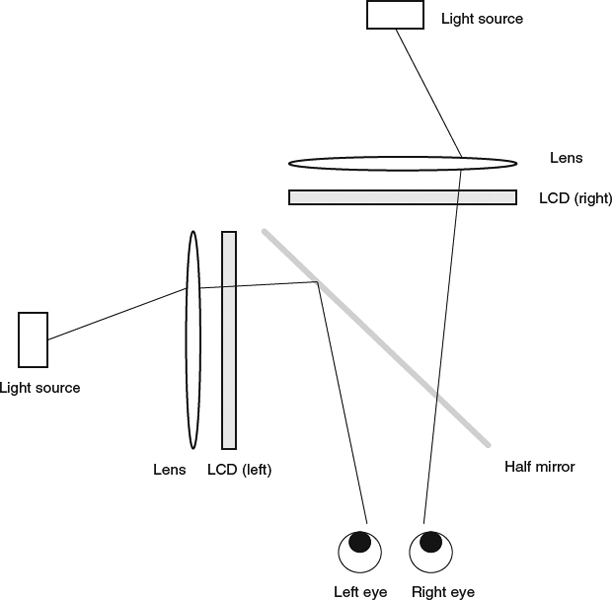3.4 Multi-View System
As the autostereoscopic display provides one more successful step toward real 3D scene reconstruction, the viewers may further expect to observe motion parallax (i.e., observing scenes from different angles by changing the viewing angle). Subject to the autostereoscopic display design, the viewers will feel confused about the objects' shapes since objects are always perceived from the same angle. To realize a 3D scene reconstruction with full motion parallax support, a 3D display providing multiple views is desired. Several multi-view technologies have been developed to meet such a requirement. One realization of a multi-view system is to install a head tracking system to monitor the viewer's position and render the corresponding view on the two-view 3D display. The other realization is to develop a 3D display to show multiple views simultaneously so the viewers can watch the desired view from different viewing angles.

Figure 3.7 Dual-LCD 3D display.
3.4.1 Head Tracking Enabled Multi-View Display
The head tracking system can provide the viewers with geometric information related to the 3D display, such as positions and orientation, in real time. There exist many head tracking technologies, such as electromechanical, electromagnetic, acoustic tracking, inertial tracking, and optical tracking. Passive markers and active emitters/receivers are often deployed together ...
Get 3D Visual Communications now with the O’Reilly learning platform.
O’Reilly members experience books, live events, courses curated by job role, and more from O’Reilly and nearly 200 top publishers.

